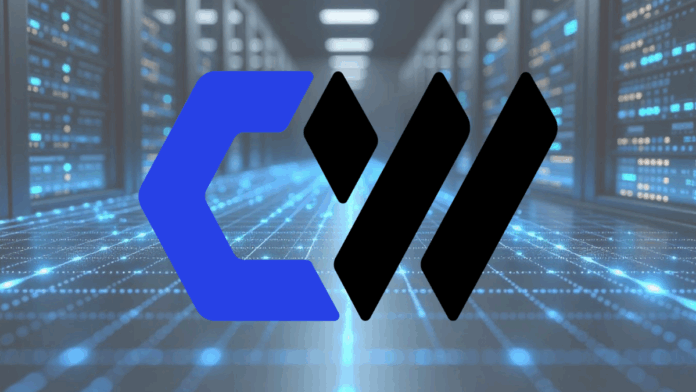Despite strong results, CoreWeave stock has been on a slide as the market reacts to high expenses for the AI infrastructure company
CoreWeave CEO Mike Intrator said that the company is in a “hypergrowth journey” and saw “unprecedented demand” for its artificial intelligence cloud services during the most recent quarter, with adoption expanding rapidly and enterprises “increasing viewing AI as a strategic imperative.”
The company saw its revenues grow more than expected, to $1.2 billion for its Q2 — a growth rate of more than 200% year-over-year.
“AI applications are beginning to permeate all areas of the economy, both through startups and enterprise, and demand for our cloud AI services is aggressively growing,” Intrator said during the quarterly call with investors.
The market for AI compute is “structurally undersupplied,” Intrator said, adding that scaling CoreWeave’s business is crucial to the company’s success. The company ended the second quarter with a contracted backlog of $30.1 billion, having seen contract expansions with hyperscaler customers as well as new customer wins that range from large enterprises to AI startups, he told analysts on the call.
CoreWeave ended the quarter with nearly 470 megawatts of active power, which it will expand to more than 900 MW by the end of this year, Intrator said. The company also aggressively expanded its contracted power arrangements to 2.2 gigawatts.
Intrator also touched on CoreWeave’s pending acquisition of data center infrastructure company Core Scientific, which has focused on colocation and support for crypto currency mining. The buy is directly in line with CoreWeave’s goal of rapidly scaling. When the transaction closes, CoreWeave will have about 1.3 GW of gross power capacity across Core Scientific’s national data center footprint, he added, with another 1 GW available for future expanstion. “Owning the infrastructure will allow CoreWeave to scale faster,” Intrator said, adding “This scale enhances our flexibility to take on new projects and meet accelerated customer demand.”
Like other companies in the data center space, CoreWeave is struggling to build and deploy AI infrastructure as fast as demand is ramping up. CoreWeave CFO Nitin Agrawal also noted the “unprecedented demand environment”, saying, “Our growth continues to be capacity constrained, with demand outstripping supply.”
With so much of a backlog, CoreWeave is rapidly pushing up its capex spending. It put $2.9 billion into capital expenditures during the quarter, primarily in property and hardware — that’s more than a billion more than it spent the previous quarter. And it expects spending to pick up even more, with Q3 capex forecasted to be between $2.9-$3.4 billion. For the full year of 2025, it expected to capex to total between $20 billion to $23 billion — but revenues to be between $5.15-$5.35 billion. CoreWeave has raised $6.4 billion through recent capital raises and a loan.
The massive spending trajectory, along with losses of $290 million for the quarter, coincided with a sell-off among stock holders. However, a likely contributing factor was also that some CoreWeave stock holders became eligible to sell the stock after its IPO in March, and unloaded approximately a billion dollars in stock, according to published reports.
Inference, training and infrastructure investments
Intrator said that in terms of workload types, CoreWeave is building infrastructure in order to be “able to be moved back and forth seamlessly between training and inference. … Our intention is to build AI infrastructure, not training infrastructure, not inference infrastructure. It’s really infrastructure that allows our clients to be able to support the workloads that they need to be able to drive to be successful,” he explained.
He added that CoreWeave has seen a “massive increase” in inference workloads, and in particular, for chain-of-reasoning inference. (CoreWeave keeps tabs on this, Intrator said, by tracking the power being consumed within data centers. Training consumes a lot of power, but power usage steps down for inference.)
Intrator said that when it comes to meeting demand, ultimately the choke point for the industry right now is the building and outfitting of the powered shells to house compute resources, at the scale being demanded.
“The biggest challenge that we have is that every time we’re able to build capacity, it is immediately consumed by one of our existing or a new client that wants to expand their exposure to additional compute to be able to serve their models,” he said, adding, “I guess it’s a good problem to have, but it’s a problem for us.”
Overall, Intrator said: “We remain confident that 2025 will be a landmark year for CoreWeave. Our momentum is real. Our strategy is working, and we are just getting started.”

